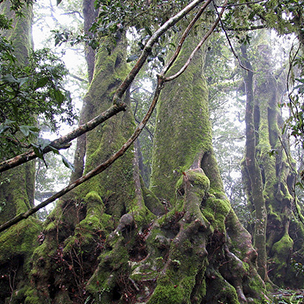May 1, 2015 — You might not think of eastern Australia as one of the hot spots of global deforestation. But it ranks right up there with the Amazon and Sumatra in a new report by WWF highlighting key areas of focus for efforts to protect forestlands around the world.
Forests are of particular importance to global efforts to maintain a healthy environment because they contain much of the world’s plant and animal diversity, and trees are particularly adept at sucking carbon dioxide, which contributes to global warming, from the air. The analysis, Saving Forests at Risk (Chapter 5 in WWF’s ongoing Living Forests Report), delineates 11 sites on four continents totaling some 420 million acres (170 million hectares) that together comprise more than 80 percent of the forest area most at risk of destruction or severe degradation in the next 15 years. Threats range from increased demand for agricultural land to unsustainable logging and mining to use of trees for charcoal and firewood.
Noting that identifying such hot spots is an important first step in protecting them, the report suggests five strategies for stopping “the march of deforestation”:
- expand and strengthen protected areas
- recognize the value of ecosystem services
- expand REDD+
- encourage corporations to eliminate deforestation from supply chains
- incorporate forest protection into infrastructure development plans.
“It’s possible to meet human demands for food, energy and raw materials in the coming decades without sacrificing precious forests,” the report concludes. “With better planning, management and collaboration at a landscape scale, we can sustainably increase production and meet local development needs while conserving critical ecosystems.”
Read more and view a map of the threatened forests here.
![]()
Photo by Jeannie Fletcher (Flickr | Creative Commons)
Ensia shares solutions-focused stories free of charge through our online magazine and partner media. That means audiences around the world have ready access to stories that can — and do — help them shape a better future. If you value our work, please show your support today.
Yes, I'll support Ensia!
